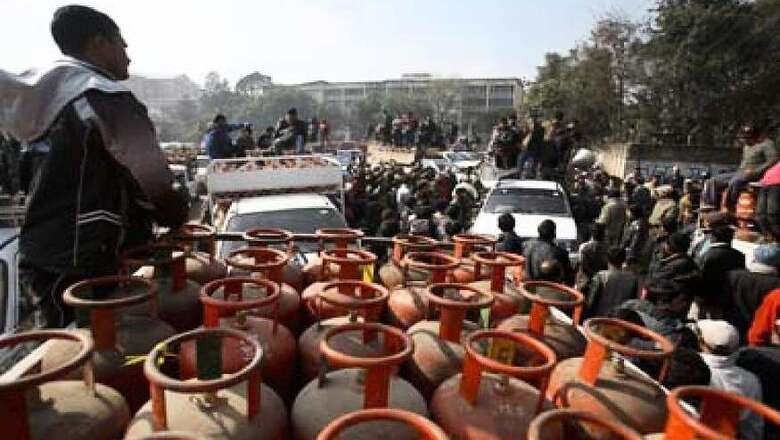
views
The Modi government’s decision to raise the price of subsidised cylinder over the past several months, including the recent fall in non-subsidised LPG price, has led to zero subsidy for the first time in years.
According to an estimation by a Nomura report, oil firms are likely to end up making an over-recovery of Rs 120 on each cylinder in May, the CNBC reported.
The Centre's introduction of the Direct Benefit Transfer scheme in January 2015, which made consumers pay full (market) price for non-subsidised cylinders LPG cylinders, while the government reimburses a subsidy amount directly into their bank accounts, promised to usher in a new, transparent pricing regime.
In the previous system, oil marketing companies would sell cylinders below cost to consumers, and then wait for the government to reimburse them for the losses (also called under-recoveries in industry parlance).
In theory, under the DBT regime, there would no more need for under-recoveries as the price of the non-subsidised cylinder could be priced at above market rates.
But the rollout could not be fully effective as the government froze the price of non-subsidised cylinders between October 2017 and July 2019, as it focused on promoting the PM Ujjwala Yojana, which provided Rs 1,600 cash assistance to incentivise the poor to get new LPG gas connections.
This meant that even the full price of the LPG cylinders was in fact still below cost.
OMCs started rapidly hiking the price of non-subsidised cylinder since July 2019.
Then, recently, international oil prices crashed because of a supply glut and a demand crash induced by the COVID-19 crisis, leading to first shrinkage of under-recoveries to finally creating an over-recovery situation.
The market price of LPG cylinders is determined based on import-parity price of Saudi LPG price (with a one-month lag).
The price build-up also includes several cost elements which are generally fixed (and changed only periodically). These include bottling charges, cylinder costs, inland freight, dealer commission, return on investment and GST etc.
The full price of LPG cylinders is revised by oil marketing companies (OMCs) every month. (A cylinder costs Rs 611 in Delhi in May.) The subsidy amount is decided separately by the government.
However, with Saudi LPG prices rising by about USD 100 per tonne in May, Nomura expects over-recoveries to come down next month.




















Comments
0 comment